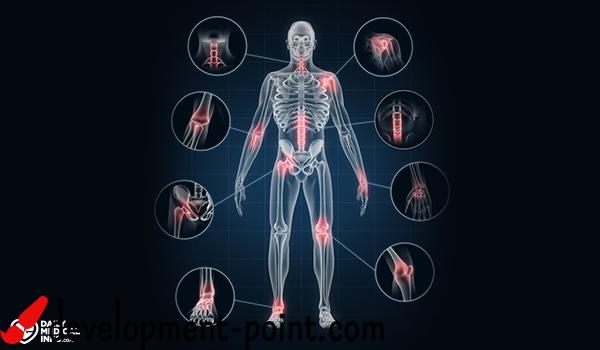Symptoms of early and serious osteoporosis
We all feel some pain in the foot or knee from time to time, and we explain this because of extreme exertion or fatigue, but could this pain be an indication of a more serious condition such as osteoporosis? How do you know you might have this condition? Get acquainted with us through the following article about the different symptoms of osteoporosis at the beginning of the disease and when it progresses, how it appears in the hand and foot, and who are the people most susceptible to it:
How does osteoporosis begin?
Osteoporosis begins to appear when the bones begin to lose some essential minerals, such as calcium, at a rapid time, and the body cannot replace these minerals quickly enough, so the bones become less dense, lose their strength, and become easy to break.
And many people do not know that they have osteoporosis until after a fracture has occurred, and for this reason many call osteoporosis the “silent disease”, and this disease often affects women, but it can also happen to men with a large percentage, and detection and treatment of the disease helps prevent the occurrence of No bone loss, no fractures.
Early symptoms of osteoporosis
In many cases, it may be difficult to notice any symptoms or signs, and others do not know that they have osteoporosis until after a fracture has occurred, but there are some signs and symptoms that may appear that should be carefully considered, including:
- Receding gums: The gums can recede (appear out of place) in the jaw if any bone is lost.
- Weak grip: Studies have found that having a poor grip is associated with lower bone mineral density, and having a weak grip increases the likelihood of falling.
- Weak and brittle nails: The strength of the nails is an indicator of the extent of bone health, as their weakness may indicate the possibility of osteoporosis, but after excluding any other pathological causes.
As we mentioned earlier, it may sometimes be difficult to notice the initial symptoms of osteoporosis, so you should visit the doctor and do the necessary tests to be reassured, especially in the case of any family history of osteoporosis.
Symptoms of advanced or serious osteoporosis
When osteoporosis begins to affect the bones significantly, some obvious and dangerous symptoms will appear on the body, such as:
- Height loss: Compression fractures in the spine can cause a person to be shorter in stature, and this is one of the most noticeable symptoms of osteoporosis.
- Exposure to a fracture as a result of any fall: Fractures can occur as a result of a simple fall or some normal movements, and in some cases a person may suffer a fracture as a result of severe coughing or sneezing.
- Back and neck pain: The presence of compression fractures due to osteoporosis may cause severe back and neck pain, as a result of the pressure of the affected vertebrae on the nerves that emerge from the spinal cord.
- Back curvature: The pressure of the vertebrae causes a slight curvature in the upper part of the back, and this curvature causes back and neck pain, and sometimes difficulty breathing.
Symptoms of osteoporosis in adolescents
Symptoms of osteoporosis in teens may include:
- Pain in the lower back.
- Pain in the hips and knees.
- Pain in the joints, ankles and feet.
- Having difficulty walking.
- The presence of fractures in the legs, feet and ankles.
It is worth noting that the symptoms of osteoporosis, especially in adolescents, can look like symptoms of other bone problems, so you must visit your doctor to get the correct diagnosis.
Symptoms of osteoarthritis of the hand
The symptoms of osteoarthritis that appear in the hand differ from one person to another, and the appearance of symptoms depends on the specific joints affected by the disease, or on the extent of the activity of the affected person. Most of the injured may suffer from the following:
- Feeling pain in the hand when using it to do anything.
- Stiffness in the joints, which appears largely in the morning.
- Difficulty moving the fingers.
- Weak hand grip.
- Swelling in the joints of the fingers or around the wrist.
Symptoms of osteoarthritis in the foot
In most cases, osteoporosis may progress without any symptoms appearing, or it is only diagnosed when the patient experiences pain as a result of a fracture. In some cases, certain symptoms may appear on the foot associated with osteoporosis, including the following:
- Feeling pain when walking.
- Redness and swelling in the forefoot.
- Foot fractures occur from time to time.
Who is more susceptible to osteoporosis?
Many researches indicate that women over the age of fifty are more likely to develop osteoporosis than men, and there are some factors that increase the risk of any person developing osteoporosis, such as:
- Having a family history of osteoporosis.
- Extra thinness and small body size.
- Having had a number of fractures before, as fractures make the bones less strong.
- Having some diseases such as rheumatoid arthritis increases the risk of infection.
- Taking certain medications, such as steroids.
- Smoking or drinking alcohol.
In the end, we advise you to read everything related to it Osteoporosis treatment and prevention methods

